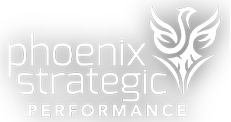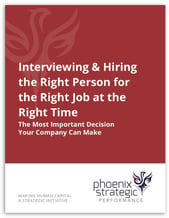For as long as we have had the modern organization, employees and managers have said, “We are too busy – we need more help’! In my 30+ years of working in and advising organizations, that statement is a common thread.
As we enter that ‘special’ time of year on the corporate calendar known as ‘performance review time,’ I ask you to incorporate the ‘Busyness Challenge’ into your review process.
What is the ‘Busyness Challenge’? It’s all about human capital (employees), human capital resource capacity, human capital resource planning, and human capital resource forecasting. Otherwise known as Human Asset Management Strategy© (HAMS).
Never Mistake ‘Busyness’ for Achievement
To incorporate the ‘Busyness Challenge’ into your review process, start with the role benchmark. A role benchmark begins when you, the manager/leader:
1. Define the ideal role that is driven by and aligned with your business strategy for: Define the
Role responsibilities – What the role must deliver
Role competencies – How the deliverables are achieved
Technical Competencies / Skills: Today, we all need specific technical skills
Business Acumen Competency / Skills: Understanding the business of the business
Organization Competency / Skills: Those elusive ‘soft/human’ skills required for today’s jobs that define not only how the job gets done but how the job gets done within the business context.
Here’s an example: If you ask an employee what impact their work has on the organization or why they are doing what they are doing, and you get a less-than-optimal answer, then you have a role benchmarking issue.
2. Define the role benchmark – not the employee. Define the role benchmark – not the employee.
Don’t evaluate the role based on the capabilities of the current person in the role. This is a subtle but dramatic shift in how we look at role and resource capacity. By defining the role of the current employee, you are allowing the person to define the job according to their preferences rather than the role benchmark defining the role. The role benchmark will determine the ideal level of proficiency that all employees must achieve. The role benchmarking process is a leader-led, not employee-led, function. We often get this step backward. Getting this wrong will forever keep you in the ‘Busyness’ Syndrome.
3. Objectively evaluates employees against the complete role benchmark. Beware of your biases and manager excuses (this will be the hardest part).
In this evaluation process, you must be ruthlessly honest in evaluating three key questions directly impacting the ‘Busyness Challenge.’
The 3 ‘Busyness Challenge’ Questions:
- Knowledge: Does the person have the full and required competencies/skills to do the job at:
- 100% of Benchmark?
- With Sustainability, Repeatability, and Reliability?
- By Themselves?
- Accountable: Is the person 100% accountable and reliable to colleagues both within the group and to other groups to deliver work/projects on time?
- Confident: Is the person confident and secure in their knowledge to deliver the job within a defined normal timeframe?
If the answers to the above questions are an honest NO or Maybe the person may be working at subpar levels. This employee may be handicapped by a lack of required knowledge and/or confidence levels needed to deliver, which will have a direct impact on accountability. This handicap requires the employee to work harder and longer and often utilize other employees to get the job done, resulting in the appearance of being BUSY. But BUSY is not the metric. Knowledge, accountability, and confidence are. Don’t let yourself say, “My people are smart and they are busy, but we need additional resources”. A deep dive into what is going on with people as they are evaluated against the role benchmark will identify how the resources are working and what you, as a manager, will need to do to maximize the current employees you have. Once you have all employees attain benchmark productivity, then you can truly evaluate if you need more resources.
‘Busyness Challenge’ Consequences
Anything less than an Absolute YES to any of the ‘Busyness Challenge’ questions will directly impact productivity, time, perceived vs. real need for extra resources, and business results. If we use ‘busyness’ as the metric, we evaluate the wrong thing. Often, your extra resources are hidden in plain sight – more than employee potential, which yields increased capacity.
Instead of more resources, it may be time to upskill and develop your current employees to meet the role benchmarks as you define them. You may not need more resources. You may need to re-evaluate the ability and capability of your current team. ‘Busyness’ is often a symptom of an underlying employee development issue. It is the responsibility of the manager to determine when new resources are required or when current employees need to be upskilled when evaluated against the benchmark. Hiring in and tolerating underperforming human capital resources is simply poor management.
How Long Can Your Organization Tolerate ‘Busyness’?
For this year’s review cycle, let’s shift paradigms and use a new way to evaluate employees. Use this review time as the valuable management and employee development tool it can be. Your employees and your company will thank you for the effort.
Download our eBook: "Human Asset Management Strategy: A New Approach," which provides a multifunctional operational guide to human capital capacity planning. You can also schedule a complimentary assessment with a member of our team.





